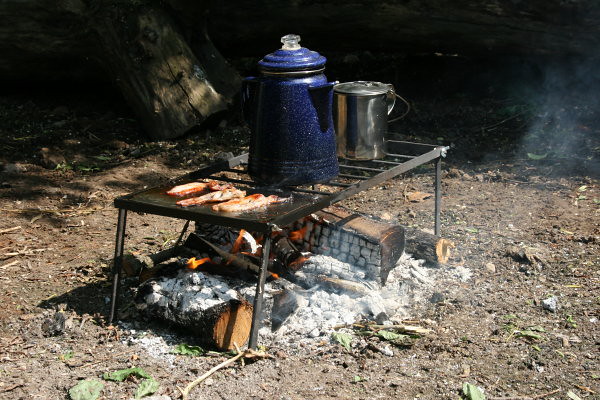Lighter fuel will work but they are as different as petrol and parrafin. Because they ARE petrol and parrafin. Coleman Fuel is just white gasoline and lighter fuel is just de-scented (mostly de-scented) parrafin.
Coleman fuel
From Wikipedia, the free encyclopedia
Jump to: navigation, search
White gas, exemplified by Coleman Camp Fuel, is a common naphtha fuel used in many lanterns and torches
Coleman fuel is a petroleum naphtha product marketed by The Coleman Company. Historically called white gas, it is a liquid petroleum fuel (100% light hydrotreated distillate) sold in one gallon cans.[1] It is used primarily for fueling lanterns and camp stoves. Originally, it was simply casing-head gas or drip gas which has similar properties.
Coleman fuel has an octane rating of 50 to 55 and none of the additives found in modern gasoline.[2] It has a lower molecular weight than gasoline, kerosene and diesel fuel and cannot be used as a substitute for any of those fuels in modern engines.[2]
The flammability of Coleman Fuel is similar to gasoline; however, it should never be used in modern era gasoline engines. Its high heat of combustion and lack of octane boosting additives like tetra-ethyl lead will destroy engine valves, and its low octane
--------------------------
Kerosene
From Wikipedia, the free encyclopedia
Jump to: navigation, search
For other uses, see Kerosene (disambiguation).
A kerosene bottle, containing blue dyed kerosene. Kerosene is typically in a blue (or blue labeled) container.
Kerosene, sometimes spelled kerosine in scientific and industrial usage,[1] also known as paraffin in the United Kingdom and South Africa, is a combustible hydrocarbon liquid. The name is derived from Greek keros (κηρός wax). The word Kerosene was registered as a trademark by Abraham Gesner in 1854 and for several years only the North American Gas Light Company and the Downer Company (to which Gesner had granted the right) were allowed to call their lamp oil kerosene.[2] It eventually became a genericized trademark.
In the United Kingdom there are two grades of heating oil under this name - Premium Kerosene (more commonly known in the UK as Paraffin) BS2869 Class C1, the lightest grade which is usually used for lanterns, wick heaters, and combustion engines; and Standard Kerosene to BS2869 Class C2, a heavier distillate, which is used as domestic heating oil.
Kerosene is usually called paraffin (sometimes paraffin oil) in Southeast Asia and South Africa (not to be confused with the much more viscous paraffin oil used as a laxative, or the waxy solid also called paraffin wax or just paraffin); the term kerosene is usual in much of Canada, the United States, Australia (where it is usually referred to colloquially as kero) and New Zealand.[3]
Kerosene is widely used to power jet-engined aircraft (jet fuel) and some rockets, but is also commonly used as a heating fuel and for fire toys such as poi. In parts of Asia, where the price of kerosene is subsidized, it fuels outboard motors rigged on small fishing craft.[citation needed]
Kerosene is typically (and in some jurisdictions legally required to be) stored in a blue container in order to avoid it getting confused with the much more flammable gasoline, which is typically kept in a red container. Diesel fuel is generally stored in yellow containers for the same reason.
-------------------------
cheers Danny










